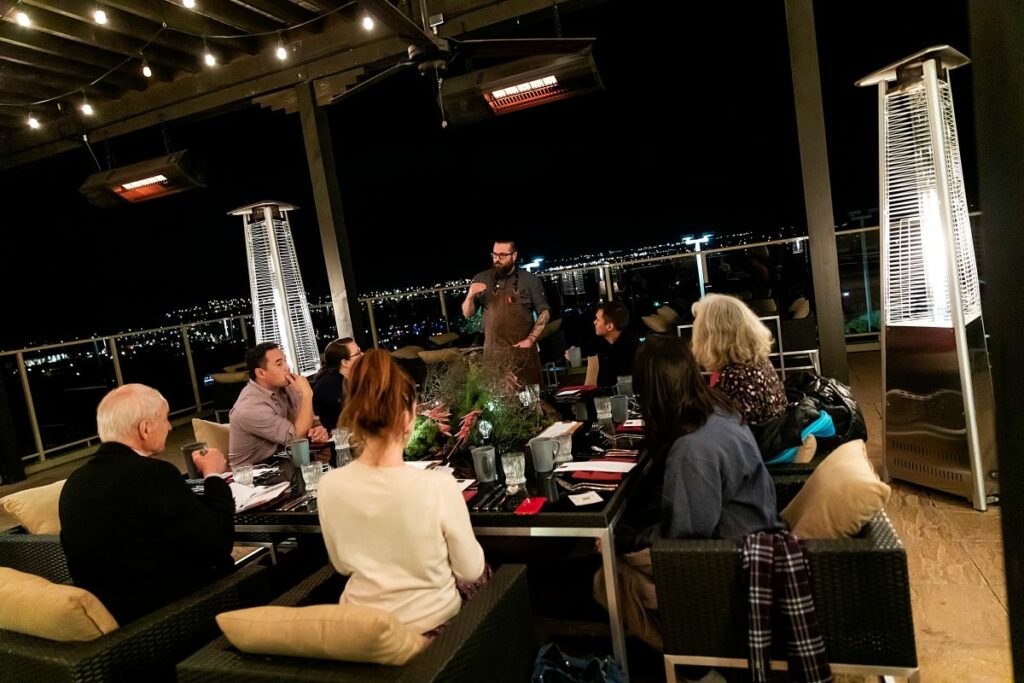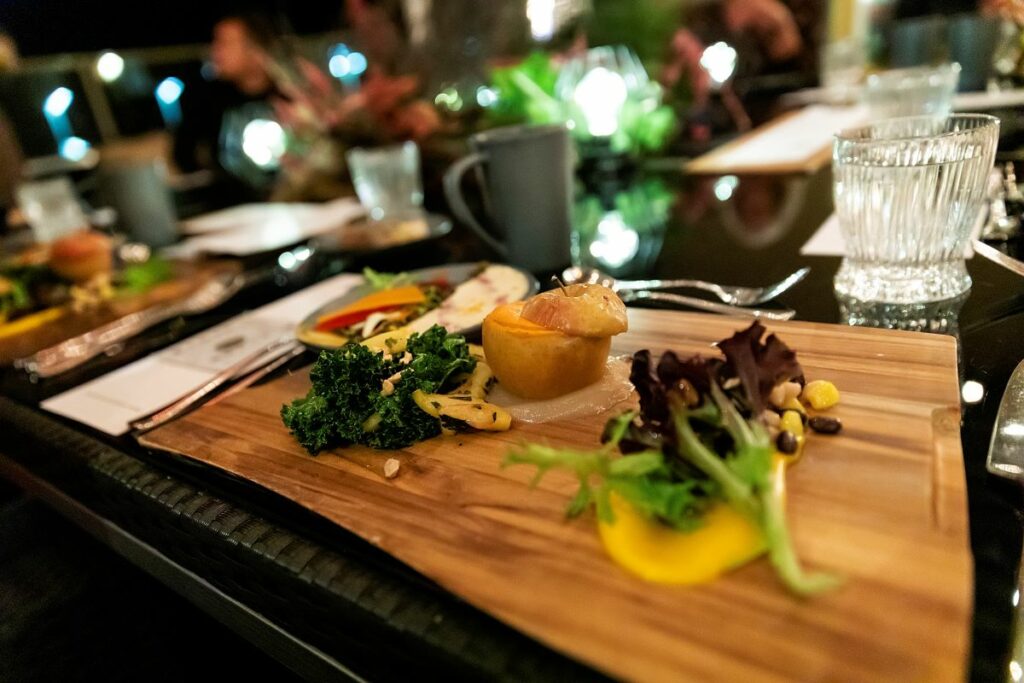Food, land and culture are entwined, but in British Columbia it seems like many of us have forgotten this. When visitors come to BC and ask about our traditional foods, what do we tell them? Salmon usually comes to mind, as does something known as West Coast cuisine, which is also hard to define. But now, thanks to a growing Indigenous cuisine movement, the complete answer is becoming easier.
Inspired by the land, water and forests found across BC’s diverse landscape, contemporary Indigenous cuisine is best defined as no-waste, head-to-tail cooking that utilizes what the land supplies as sustainably as possible. Now found in a variety of restaurants ranging from food trucks to fine dining; this modern take on Indigenous cuisine is being developed by an exciting group of creative young chefs who are using food to rediscover their culture and promote reconciliation.
In retrospect, like many British Columbians, I’ve been eating Indigenous cuisine my entire life. Every time I picked seasonal huckleberries, dug for clams, ate wild game or drank nettle tea I was enjoying what the land produced. What was missing was a deeper knowledge of the territory that supplied it.
I grew up in Courtenay, on the unceded traditional territory of the K’òmoks First Nation. But my disconnect from this vital knowledge was part of the legacy of marginalizing Indigenous people, cultures and cuisine in Canada. More simply, I never recognized Indigenous food for what it was—because so much of that knowledge had been erased.
For chef Murray McDonald, this loss of knowledge is deeply personal. A Newfoundlander, it wasn’t until McDonald was an adult that he learned his maternal ancestors were Labrador Innu and that he had Métis bloodlines on his father’s side. This suppressed identity meant he never grew up in the culture—let alone became familiar with the traditional foods.
As chef at Newfoundland’s Fogo Island Inn, he had begun working with his apprentice, a Mi’kmaq chef, collecting botanicals for teas and cooking, when he realized he was relearning traditional knowledge. “For me, it feels like part of my heritage was stolen away from me. I should have been taught this stuff, but I wasn’t. The best way to learn now is through the food,” McDonald says.
McDonald brought his passion for Indigenous cuisine to BC, and opened a new restaurant at Spirit Ridge in Osoyoos called The Bear, The Fish, The Root and The Berry. With a name that refers to the legend of the Four Food Chiefs of the Okanagan Nation, McDonald uses the legend and local guidance to shape the menu.
With dishes that emphasize the use of ingredients that pre-date colonization, the menu includes things like bison instead of beef, locally foraged ingredients like sumac and juniper, as well as salmon and bannock.
While the new menu is being well-received, McDonald says we still have a ways to go. “In BC, it’s not legal to serve all the things I want to,” he explains. “In Newfoundland, I could work with hunters I knew and trusted and serve wild game. Here it’s not yet possible.” He also says while he currently has access to great land and seafood suppliers, very few of them are Indigenous. His hope is that as people become familiar with Indigenous cuisine and the demand increases, that Indigenous suppliers will see the benefit of supplying wild food for Indigenous restaurants.
Being guided by Indigenous chefs to eat what our land naturally and sustainably produces aligns well with contemporary worries about both the climate crisis and food security. Perhaps even more importantly though; food is about connection. As we struggle with wide ranging political and societal issues it’s easy to forget that sometimes the simplest solutions are the best ones. Sitting down and learning about each other through food is an easy and timeless way to make our communities stronger.
A Sampling of Indigenous Restaurants in BC
Keenawaii’s Kitchen, Skidegate: Dishes made with ingredients that have been grown or caught on Haida Gwaii, including sguu (dried seaweed), dried k’aaw (herring eggs on kelp), and gilgii (dried salmon), locally-grown vegetables, wild berries and other in-season foods. 250-559-8347
Salmon n’ Bannock, Vancouver: Specializing in wild fish, free-range game meat and bannock. Try the 24-hour braised bison pot roast or wild sockeye salmon cured in beetroot and citrus. salmonandbannock.net
Kekuli Café, Merritt & Westbank: “Kekuli” translates to “pithouse,” the winter homes First Nations people once lived in during the cold months. Serving sweet and savoury bannocks try any of the pow-wow fry bread tacos topped with your choice of Saskatoon grilled chicken, chili, pithouse corn and beans, chorizo or venison. kekulicafe.com
Thunderbird Café, Whistler: Located at the Squamish Lil’wat Cultural Centre, the menu includes salmon, venison, elk and vegetation such as mushrooms, herbs, cedar, wild sweet onions and greens. slcc.ca/visit/thunderbird-cafe
lelem’, Fort Langley: Translating to home in the hən̓q̓əmin̓əm̓ language, Lelem’ at Fort Langley is Indigenous-owned and incorporates some of the traditional flavours of a Coast Salish diet. lelem.ca
Jack Sam’s Restaurant & Lounge, Chase: Offers some twists on standard fare that include a nod to traditional Indigenous and Secwépemc cuisine including braised elk stroganoff and choke cherry glazed rabbit. quaaoutlodge.com/dining-en.html
Mr. Bannock, North Vancouver: The first Indigenous-owned food truck fries up fresh bannock with as tacos, burgers or in the traditional way. mrbannock.com



